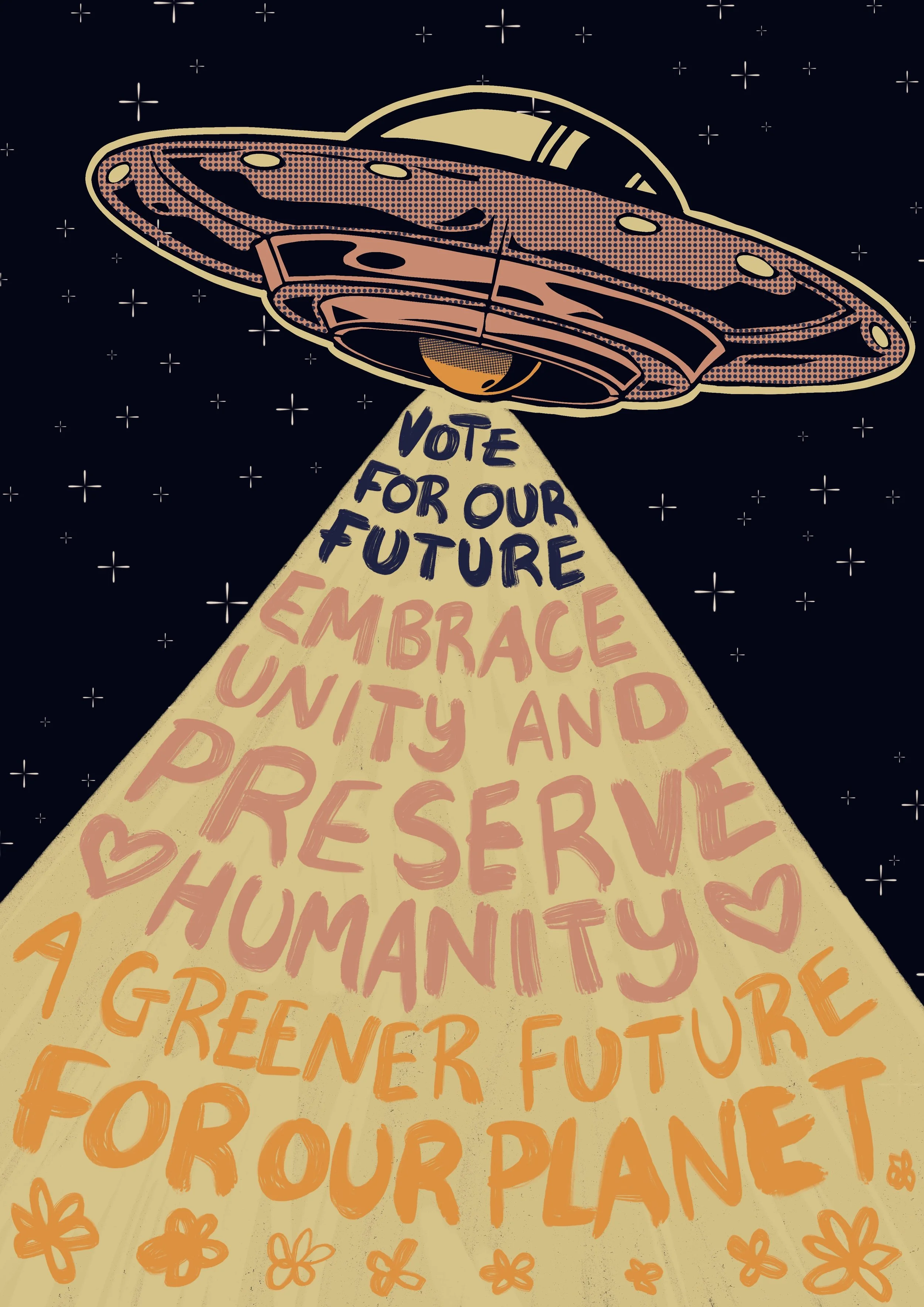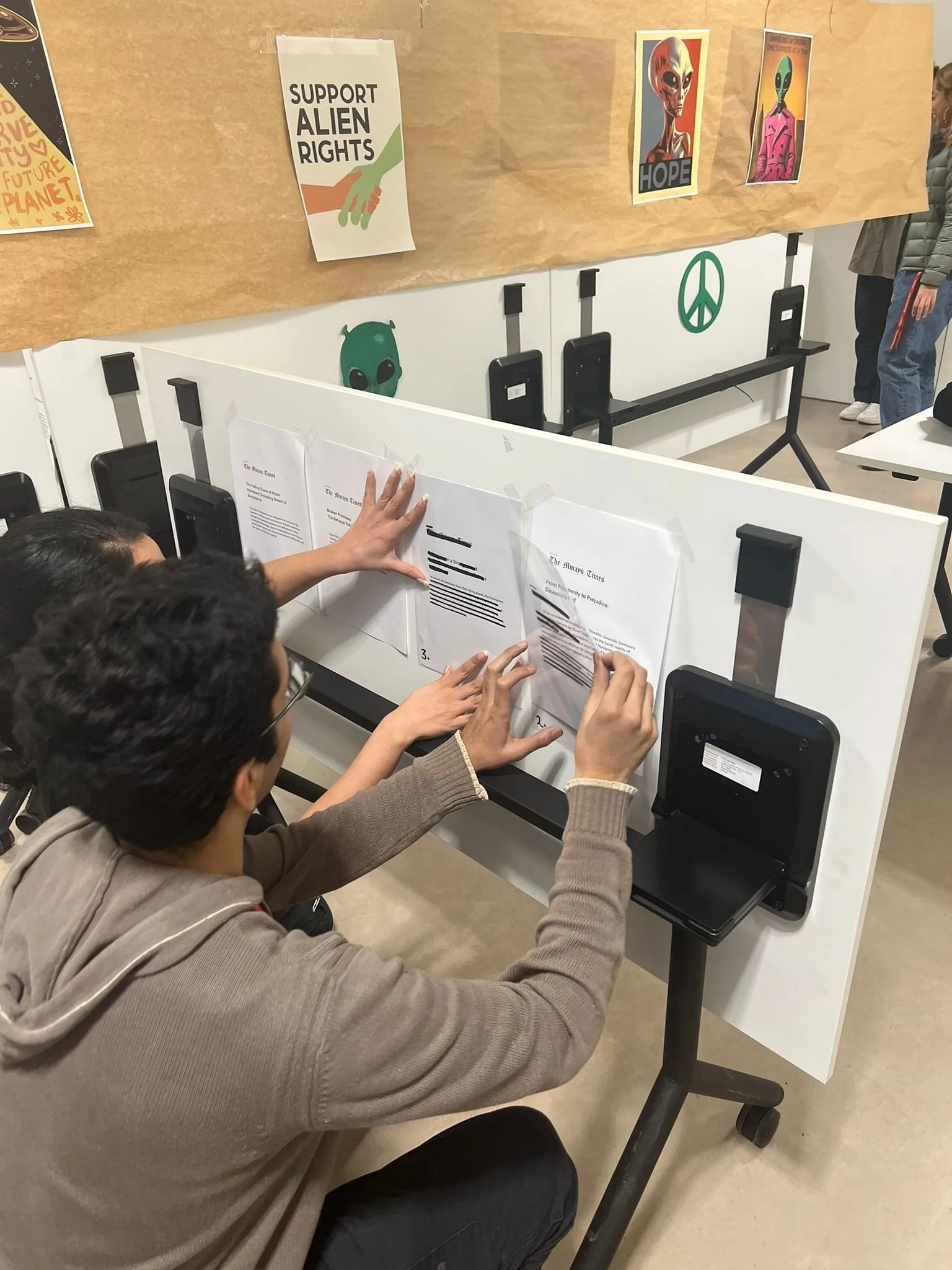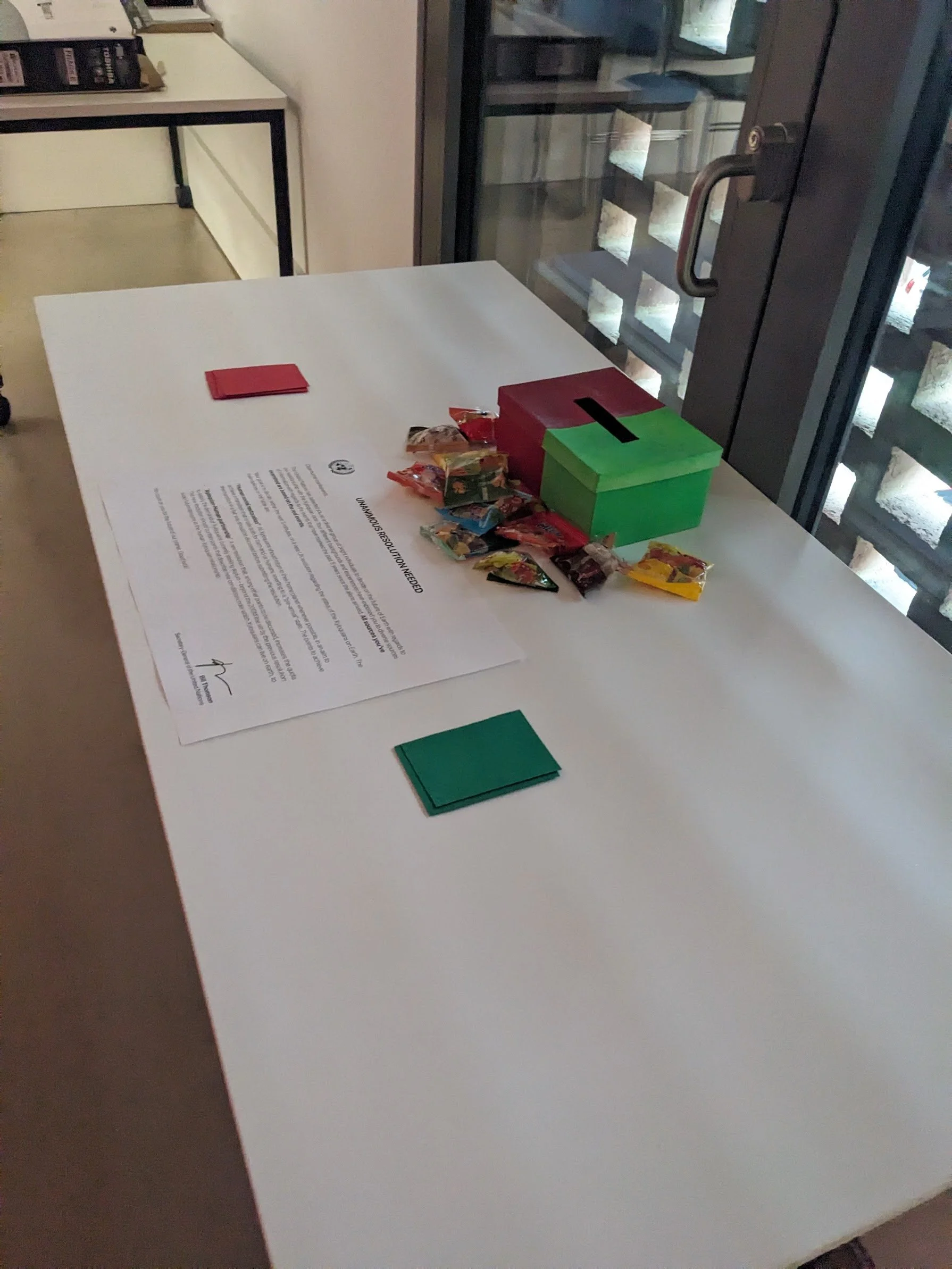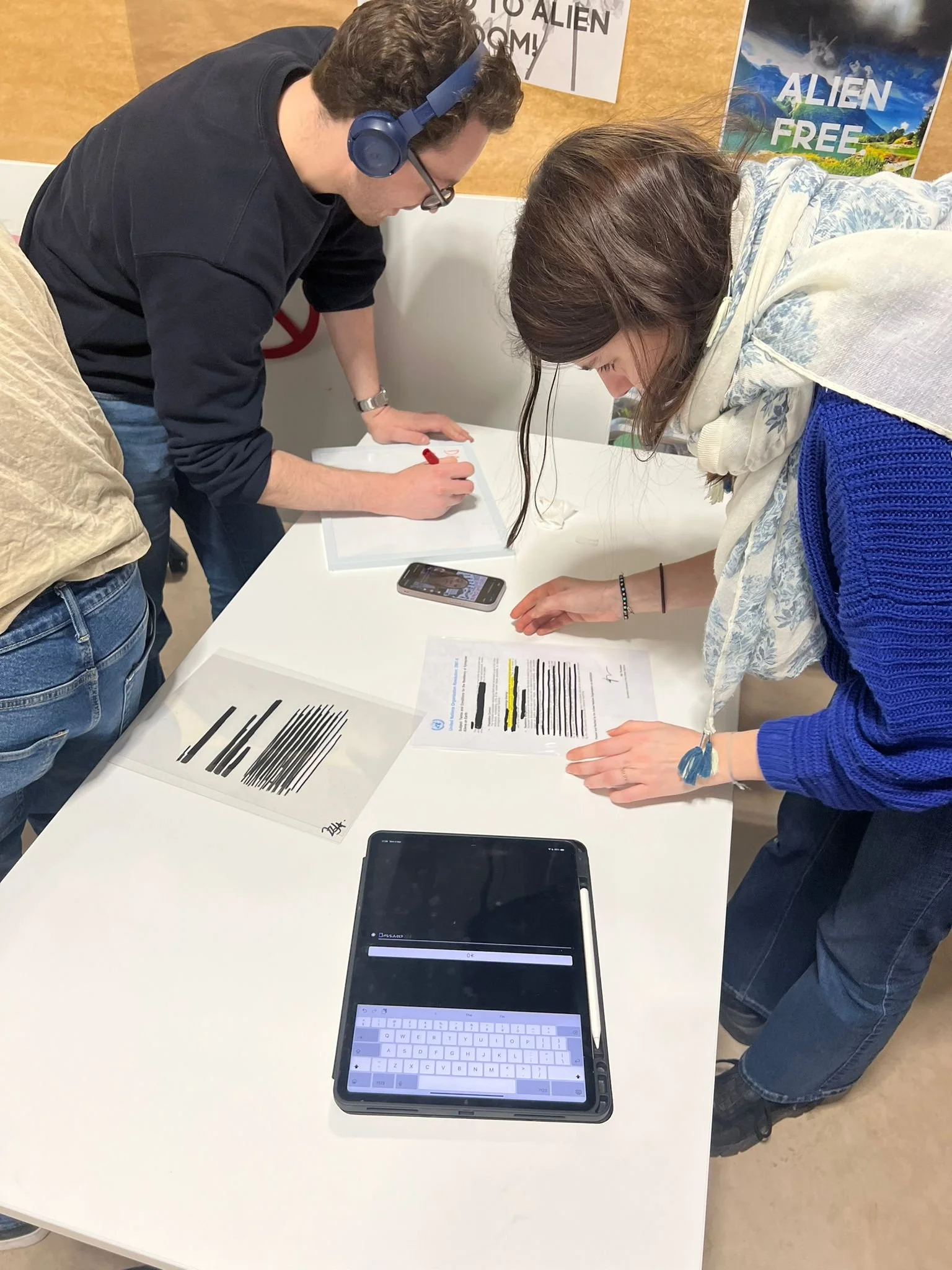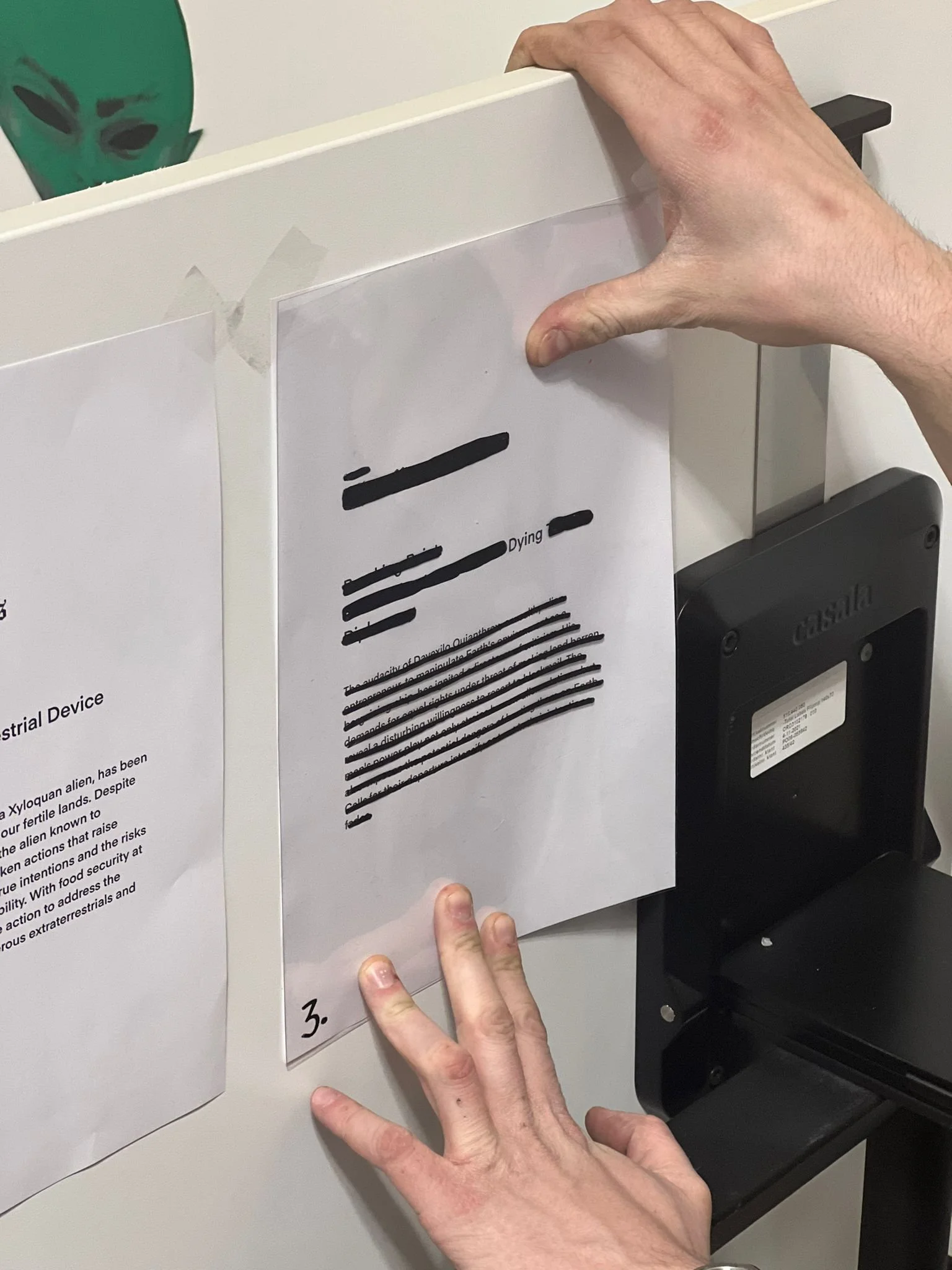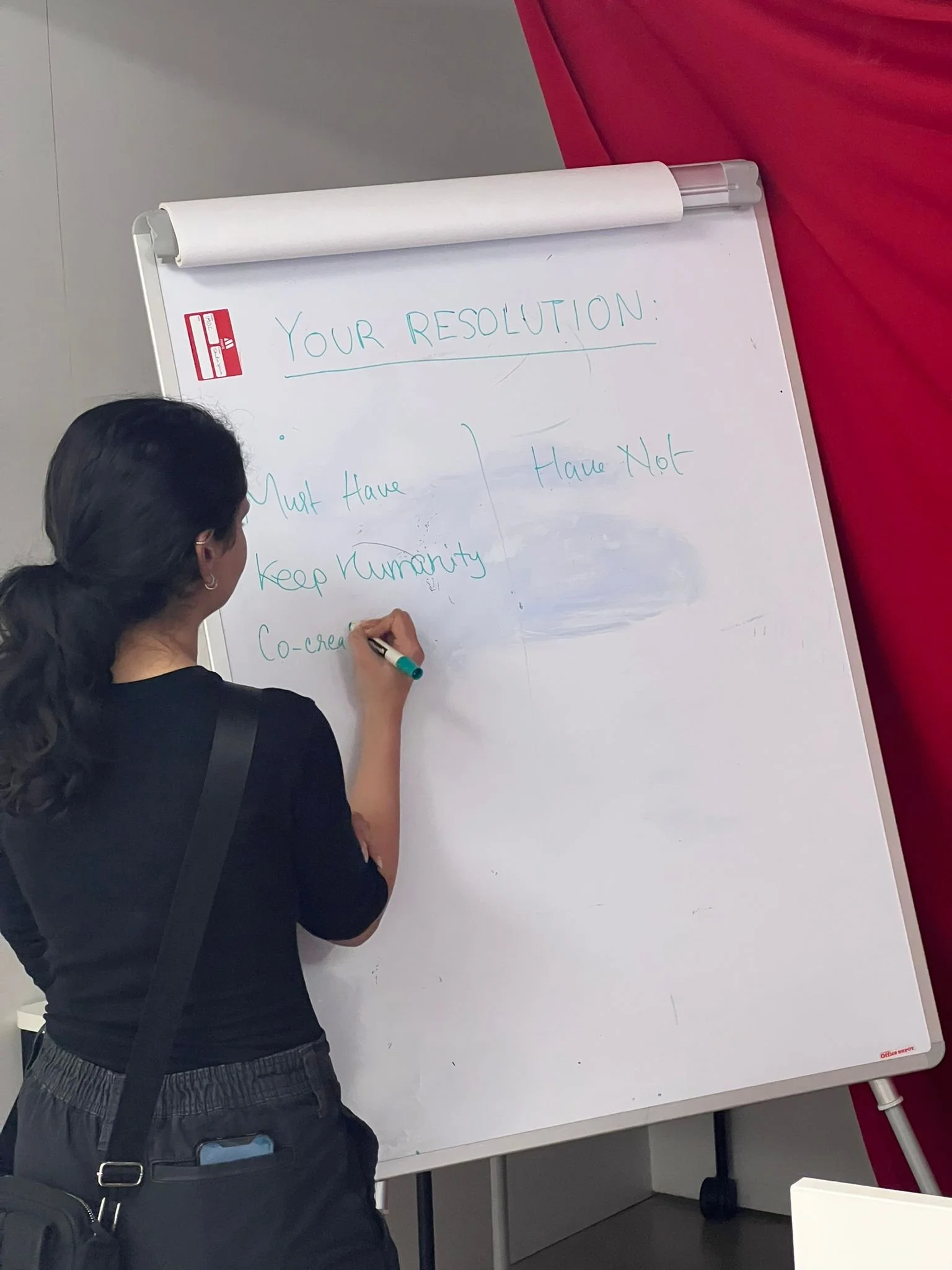Algorithmic Impact Simulation
An immersive escape room experience that explores the impact of political algorithms through a fictional alien invasion scenario. This imaginative narrative allows participants to engage with the effects of targeted digital manipulation in a neutral and engaging way, fostering reflection on online behaviour and empathy without triggering real-world sensitivities.
Duration
Nov. 2023 - Present
Achievements
Research & strategy, creative ideation, illustration & visual design, storytelling, game design, prototyping
Approach and methodologies:
A methodology we applied when developing the escape room project involved a multidisciplinary approach, integrating the expertise of an architect, contemporary designer, service designer, illustrator, painter, and engineer.
The team’s diverse perspectives and differing opinions fostered robust discussions and helped us to create more innovative solutions, resulting in a cohesive and impactful escape room that effectively addressed the complex issues of digital manipulation and user empathy.
My role:
As a service designer and illustrator, I focused on creating an engaging user experience that conveyed the impact of political algorithms and researching in-depth the effects and issues surrounding misinformation. I was also responsible for organising regular ideation workshops.
Our prototype
After conducting two separate prototyping sessions with teams of six, split into two groups of three on each side of the room, the escape room proved highly successful. Each team was unknowingly given different information about the same alien invasion scenario—one group received a narrative framing the invasion as positive, while the other saw it as negative.
The effectiveness of this propaganda was striking: participants were completely unaware that the other group had been given a contrasting perspective, demonstrating how persuasive targeted information can be. This setup not only created a compelling and immersive experience but also sparked rich discussions during the final group debrief. Participants engaged deeply in conversations about their differing viewpoints and the nature of the manipulated information, highlighting the effectiveness of the room in demonstrating the power of propaganda and fostering thoughtful dialogue on how such tactics influence decision-making and perceptions.
The details:
The escape room was meticulously designed to immerse participants in a scenario that highlighted the influence of targeted algorithms. The room featured rich illustrations and interactive elements, including iPad games and simulated TikTok videos, to create a dynamic and engaging environment, inadvertently getting subjects immersed in one side of a story. To explore the concept of divided information, we divided participants into two groups, each entering a separate half of the room separated by a curtain. Each group received contrasting narratives about the alien invasion—one portraying it as beneficial and the other as harmful—despite both groups being presented with the same underlying story.
After escaping the room, the groups are brought together for a full discussion. They must collaborate and reach a unanimous decision on a solution to the problem, illustrating the challenges of finding consensus when faced with divergent viewpoints and manipulated information.
Examples of our fake articles:




